While comets can’t tell lies, they do sometimes grow long noses. As the weeks click by and our perspective on Comet L4 PANSTARRS changes, its original plume-like dust tail has shrunk and faded while a second tail just won’t stop growing.
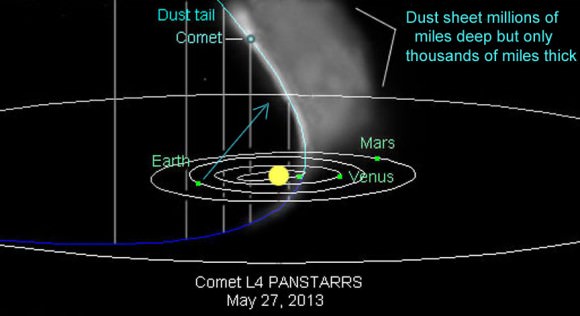
I’m talking about the anti-tail, so called because it points toward the sun instead of away. Like the normal dust tail, an anti-tail is formed from fresh dust blown back from the comet’s head by the pressure of sunlight. As the comet continues along its orbital path, last week’s dust lingers behind, forming a “trail of breadcrumbs” in its wake. Right now those breadcrumbs look like a light saber straight out of Star Wars. Time exposure photographs show a striking sunward-pointing appendage more than 6 degrees (12 full moons) long. I’ve been keeping an eye on Comet PANSTARRS here at home and can report that the anti-tail is plainly visible with a telescope under dark skies. Watching it grow from a short nub to the most dominant feature of this remarkable object has been the highlight of many a clear night.
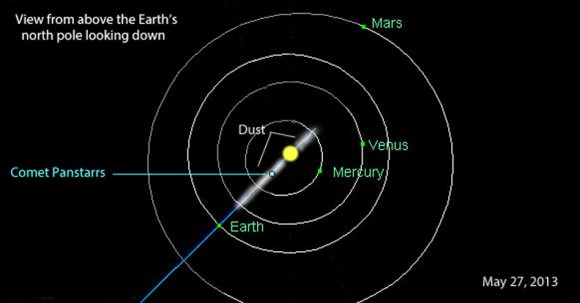
Nothing stands still in our solar system. Earth’s moving, the comet’s moving. Later this week on May 26-27, Earth will pass directly through the comet’s orbital plane, which slices through the plane of the planets at a very steep angle. As the Earth approaches this intersection, we look up (from the northern hemisphere) and stare squarely into the long trail of dusty debris deposited by PANSTARRS during its recent swing around the sun in March. It gets better.
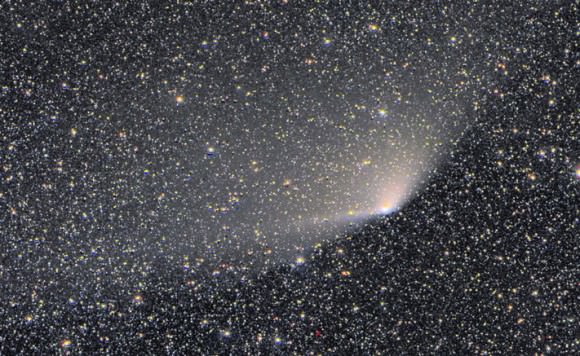
Sunlight pushes the smaller particles into a vast, thin sheet or fan extending millions of miles into space well beyond the path traveled by the comet’s nucleus. Since we now see PANSTARRS almost “edge-on”, all that dust overlaps from our perspective to form a thick, bright line sticking out of the comet’s head. It’s as if we’re seeing the ghost of PANSTARRS from the recent past still lingering in space. If we could somehow see the whole works broadside, the comet would appear fainter, spread out and much more diffuse.
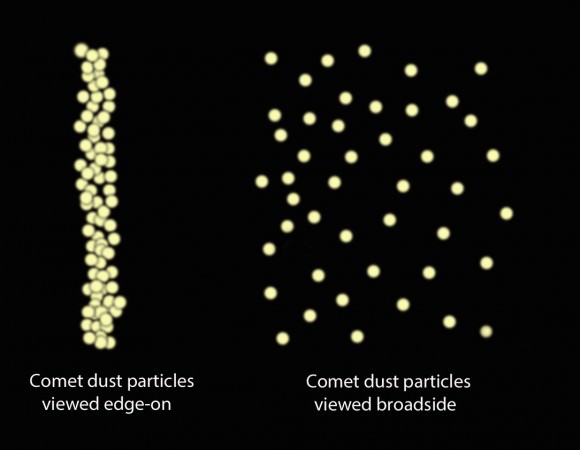
The Milky Way stands out as a band of light distinct from the thin scree of stars for the very same reason; our gaze cuts edge-on through our galaxy’s flattened disk where stars are most concentrated. Like comet dust, they pile atop one other to create a distinct ribbon of fuzzy light slicing across the night sky.
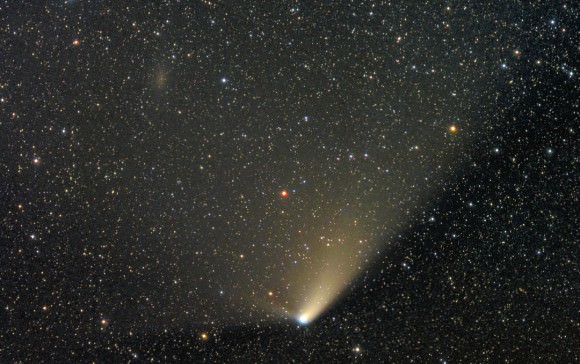
In the next few days the tail could grow considerably longer and intensify in brightness as we move closer to the comet’s orbital plane. Unfortunately the moon will be at or near full at the same time, making it tougher to fully appreciate this amazing apparition at least with binoculars and telescopes. Cameras will have better luck. Will that stop you from looking? I hope not. Either way, you can use this map to help you find Comet PANSTARRS and check it out yourself.
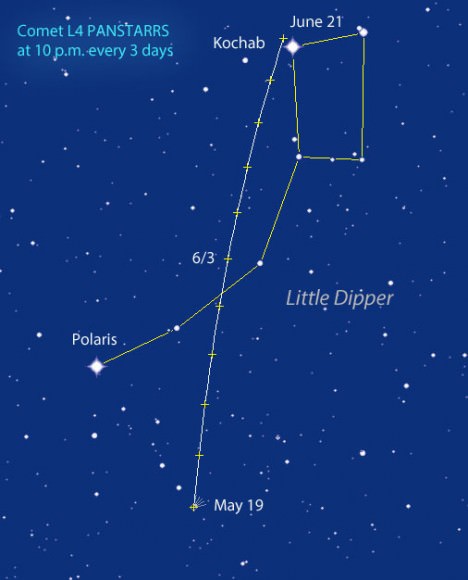
When you do spot the anti-tail, don’t be fooled. It may appear to be pointing at the sun, but it’s only dust spread along a path once tread.
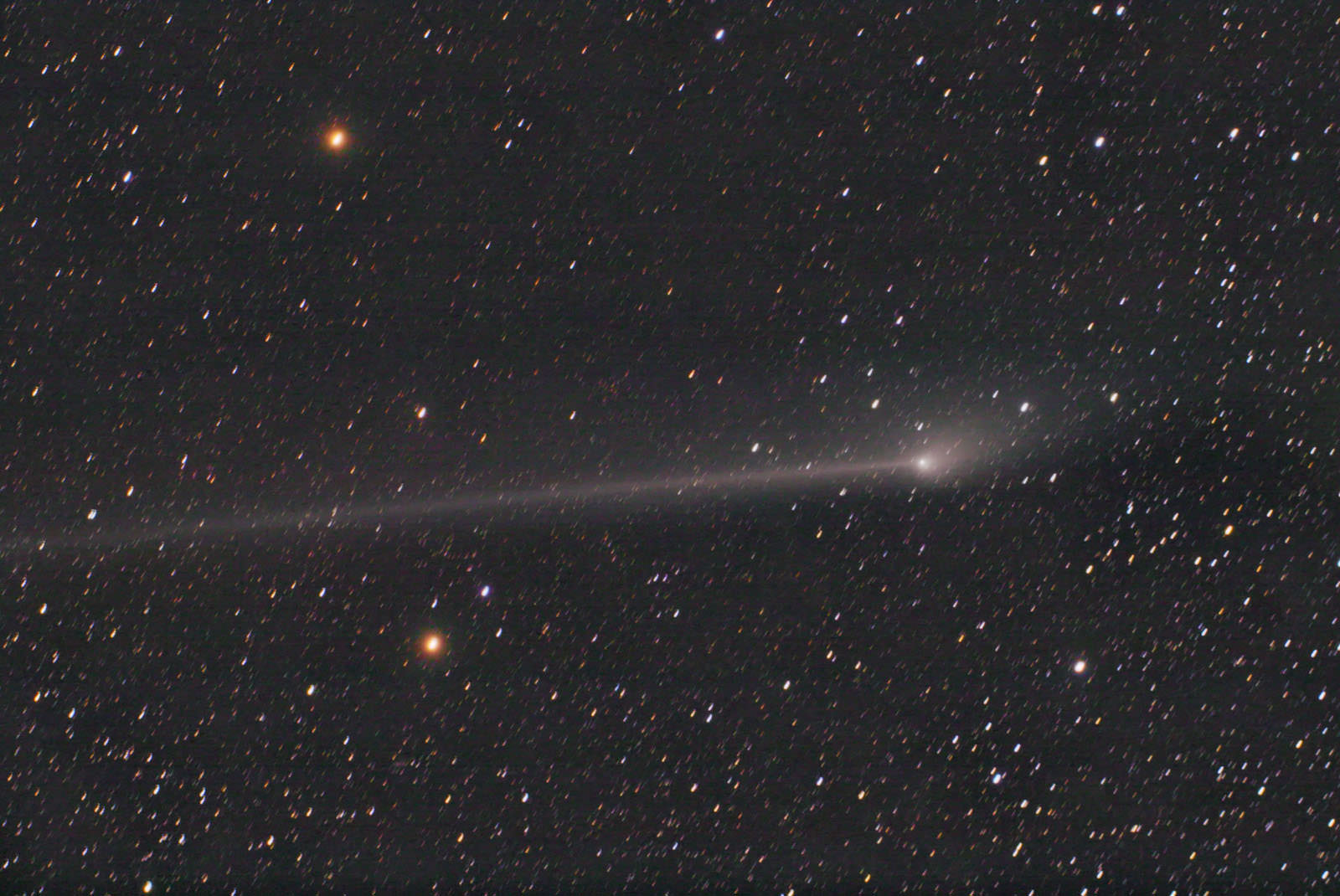
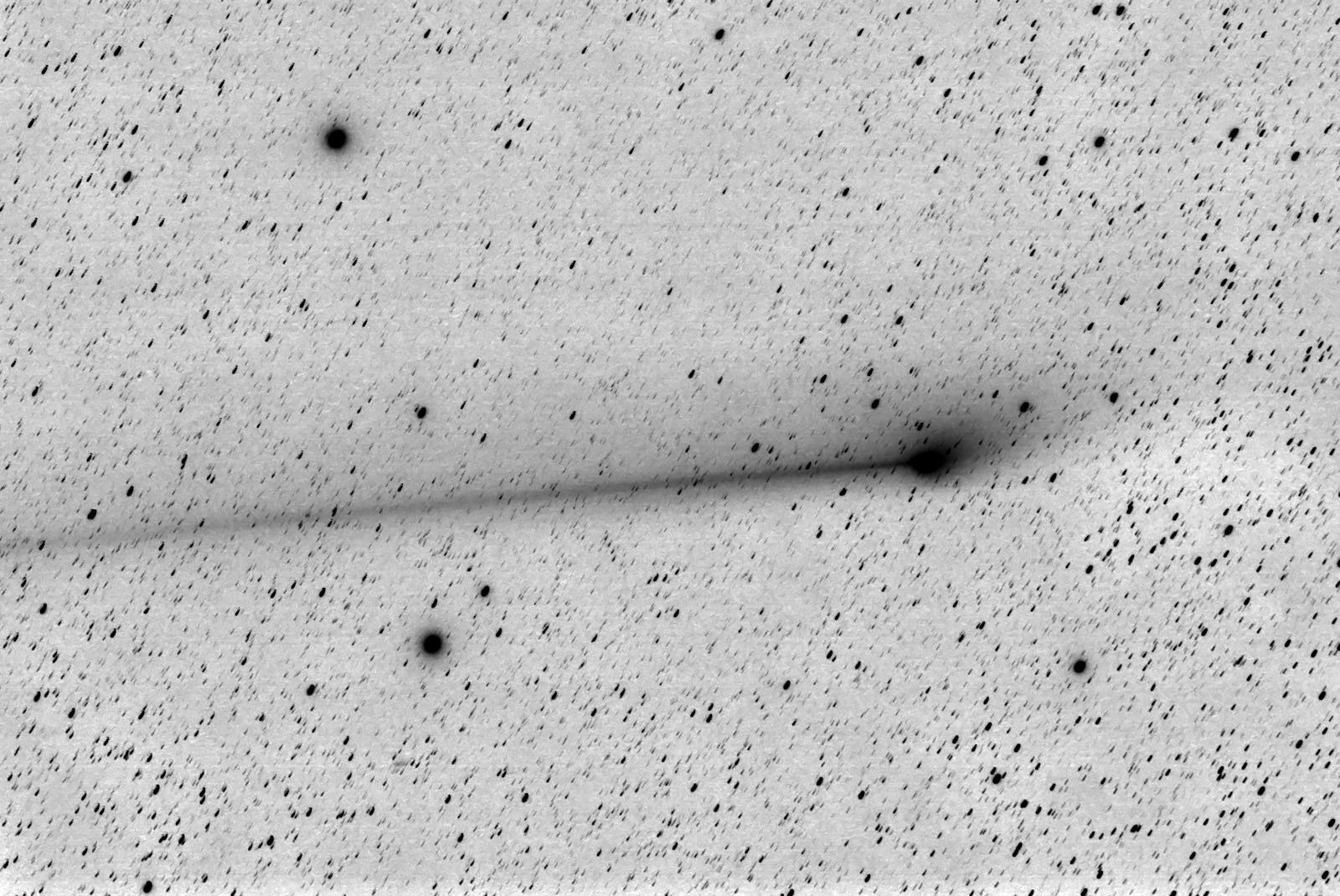

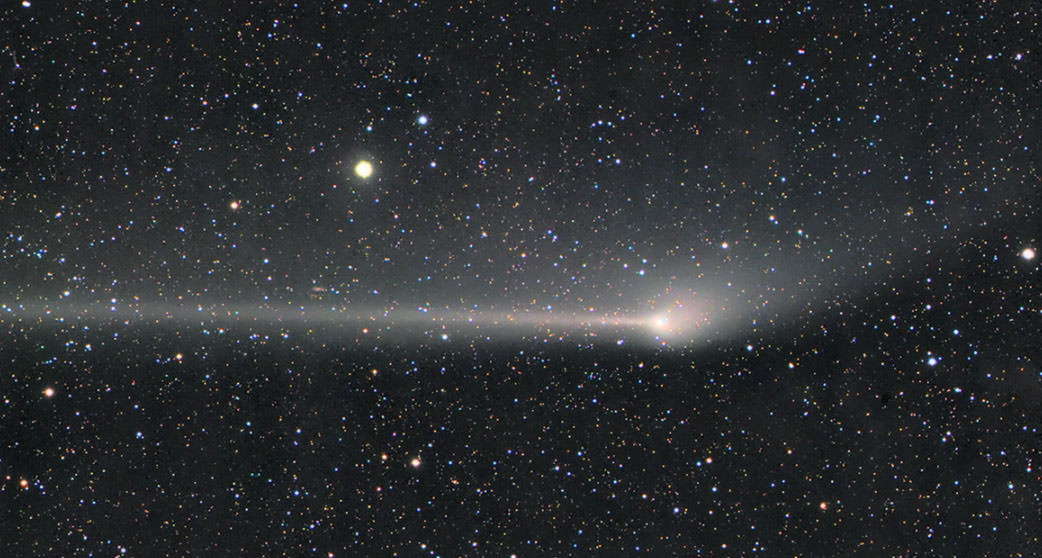
I really did not know this.
What a load of rubbish. At least it was entertaining. This is the sunward side electrical spike as the comet discharges the solar capacitor that is our solar system. When will you give us real science nasa? Can’t wait to see what you come up with when ISON has close encounter with Mars end of sept 2013.